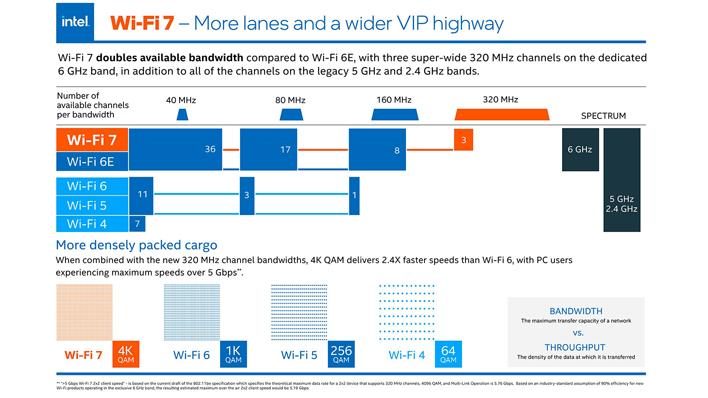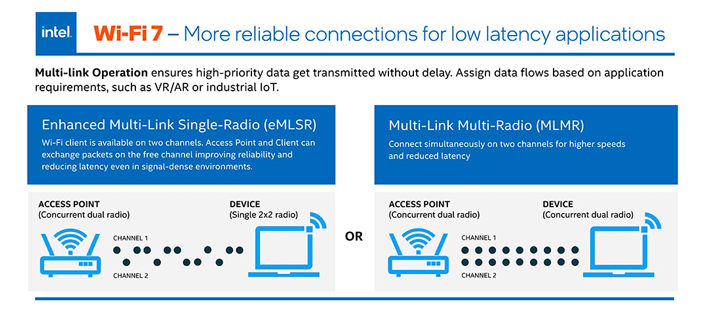Intel And Broadcom Tag Team Wi-Fi 7 Demo For Blazing Fast Next-Gen Wireless Topping 5Gbps

The demonstration was performed by Intel’s Wireless CTO Carlos Cordeiro and Broadcom Vice President of Wireless Connectivity Vijay Nagarajan. The setup consisted of three seemingly identical laptops using different Wi-Fi standards—Wi-Fi 6 at 5 GHz, Wi-Fi 6E at 6 GHz, and finally Wi-Fi 7 also at 6 GHz.
Each laptop uses an Intel Wi-Fi card which is connected to a router using Broadcom’s Wi-Fi radio. After explaining some technical details, which we will get to, the duo conducted a speed test of each setup in turn.
Given their pristine test environment—real world performance will vary—the Wi-Fi 6 system was able to achieve rates of 1 gigabit, pretty much on the nose. Moving up to Wi-Fi 6E, the 6 GHz spectrum doubles those speeds to 2 gigabits per second. This is largely a result of doubling the channel width from 80 MHz to 160 MHz. Technically, Wi-Fi 6 can be configured to use 160 MHz channels within the 5 GHz spectrum but doing so reduces the number of available non-conflicting channels to just two. This can create interfere issues in already congested environments.
The broader 6 GHz spectrum allows the Wi-Fi 7 standard to comfortably stretch its legs up to wider 320 MHz channels. It can support up to three 320 MHz channels, up to eight 160 MHz channels, or up to seventeen 80 MHz channels. Given the prior doubling pattern set with Wi-Fi 6 and 6E, we might expect Wi-Fi 7 to deliver 4 gigabits per second of bandwidth. Instead, the demonstration shows even faster 5 gigabit speeds.
Wi-Fi 7 brings more than just wider channels. The standard also leverages higher order 4K QAM—Quadrature Amplitude Modulation—which permits encoding more data into a transmission. Intel likens this technology to using professional movers to optimize a truck’s cargo space to fit more boxes, while the channel width upgrade is like using a moving truck instead of a moving van to begin with. These two factors work together to push Wi-Fi 7 beyond a simple linear increase.
Intel and Broadcom say Wi-Fi 7 will be the “platform for the next 10 years of wireless experiences.” The companies cite higher speed and lower latency requirements along with improved reliability and capacity as reasons to drive its adoption. The Wi-Fi 7 standard has an eventual goal of achieving “double digit” gigabit speeds. Innovations like MLO could help the standard eventually approach its 46Gbps theoretical maximum throughput. As such, this is still an early technical demonstration of the standard's potential, but we hope to see Wi-Fi 7 devices gain rapid adoption in the near future.



